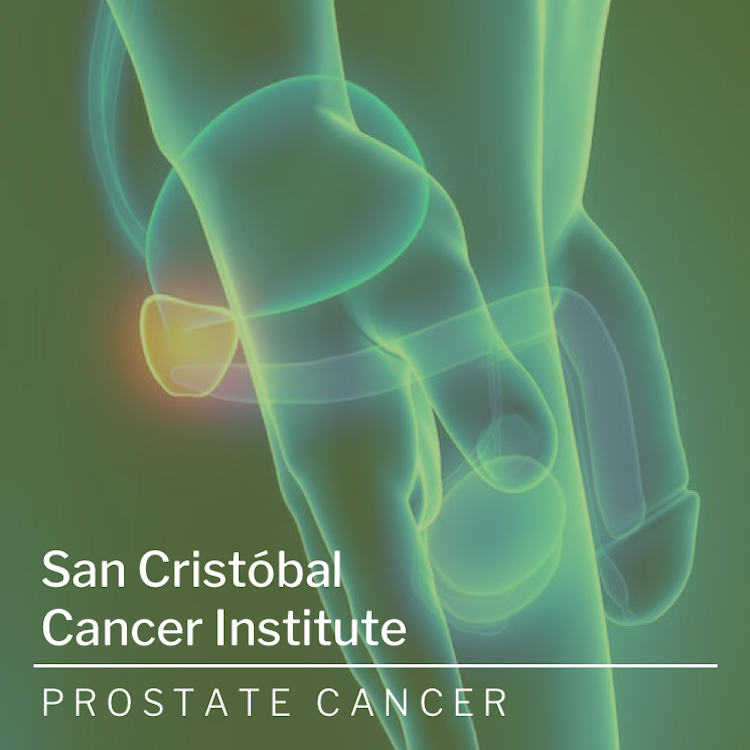
Prostate Cancer Facts

Prostate cancer is the most common cancer in men, but has proven to be highly treatable if found in the early stages. The cancer affects the prostate gland (the gland that produces some of the fluid in semen and plays a role in urine control in men, located below the bladder and in front of the rectum). The American Cancer Society estimates about 161,000 new cases every year, with roughly 26,000 fatalities. Regular testing is crucial as the cancer needs to be diagnosed before metastasis.
Overview
Prostate cancer is one of the most common types of cancer in men. Usually prostate cancer grows slowly and is initially confined to the prostate gland, where it may not cause serious harm. However, while some types of prostate cancer grow slowly and may need minimal or even no treatment, other types are aggressive and can spread quickly. Prostate cancer that’s detected early — when it’s still confined to the prostate gland— has a better chance of successful treatment.
Types
The type of prostate cancer you have tells you the type of cell that the cancer started in. Knowing this helps your doctor decide which treatment you need.
- Acinar adenocarcinoma: Adenocarcinomas are cancers that develop in the gland cells that line the prostate gland. They are the most common type of prostate cancer. Nearly everyone with prostate cancer has this type.
- Ductal adenocarcinoma: Ductal adenocarcinoma starts in the cells that line the ducts (tubes) of the prostate gland. It tends to grow and spread more quickly than acinar adenocarcinoma.
- Transitional cell (or urothelial) cancer: Transitional cell cancer of the prostate starts in the cells that line the tube carrying urine to the outside of the body (the urethra). This type of cancer usually starts in the bladder and spreads into the prostate. But rarely it can start in the prostate and may spread into the bladder entrance and nearby tissues.
- Squamous cell cancer: These cancers develop from flat cells that cover the prostate. They tend to grow and spread more quickly than adenocarcinoma of the prostate.
- Small cell prostate cancer: Small cell prostate cancer is made up of small round cells. It’s a type of neuroendocrine cancer.
Symptoms
Prostate cancer may cause no signs or symptoms in its early stages, which makes it particularly dangerous. Prostate cancer that’s more advanced may cause signs and symptoms such as:
- Trouble urinating
- Decreased force in the stream of urine
- Blood in semen
- Discomfort in the pelvic area
- Bone pain
- Erectile dysfunction
Make an appointment with your doctor if you have any signs or symptoms that worry you or to discuss prostate cancer screening.
Diagnosis
Some medical organizations recommend men consider prostate cancer screening in their 50s, or sooner for men who have risk factors for prostate cancer. Prostate screening tests might include:
- Digital rectal exam (DRE). During a DRE, your doctor inserts a gloved, lubricated finger into your rectum to examine your prostate, which is adjacent to the rectum. If your doctor finds any abnormalities in the texture, shape or size of the gland, you may need further tests.
- Prostate-specific antigen (PSA) test. A blood sample is drawn from a vein in your arm and analyzed for PSA, a substance that’s naturally produced by your prostate gland. It’s normal for a small amount of PSA to be in your bloodstream. However, if a higher than normal level is found, it may indicate prostate infection, inflammation, enlargement or cancer. PSA testing combined with DRE helps identify prostate cancers at their earliest stages. Hence, debate continues surrounding prostate cancer screening.
If a DRE or PSA test detects an abnormality, your doctor may recommend further tests to determine whether you have prostate cancer, such as:
- Ultrasound. If other tests raise concerns, your doctor may use transrectal ultrasound to further evaluate your prostate. A small probe, about the size and shape of a cigar, is inserted into your rectum. The probe uses sound waves to create a picture of your prostate gland.
- Biopsy: If initial test results suggest prostate cancer, your doctor may recommend a procedure to collect a sample of cells from your prostate (prostate biopsy). Prostate biopsy is often done using a thin needle that’s inserted into the prostate to collect tissue. The tissue sample is analyzed in a lab to determine whether cancer cells are present.
When a biopsy confirms the presence of cancer, the next step is to determine the level of aggressiveness (grade) of the cancer cells. A laboratory pathologist examines a sample of your cancer to determine how much cancer cells differ from the healthy cells. A higher grade indicates a more aggressive cancer that is more likely to spread quickly. The most common scale used to evaluate the grade of prostate cancer cells is called a Gleason score. Gleason scoring combines two numbers and can range from 2 (non-aggressive cancer) to 10 (very aggressive cancer). In addition, genomic testing in increasingly being used to more accurately assess risk and detect aggressive prostate cancer.
Stages
Once a prostate cancer diagnosis has been made, your doctor works to determine the extent (stage) of the cancer. If your doctor suspects your cancer may have spread beyond your prostate, one or more of the following imaging tests may be recommended:
- Bone scan
- Ultrasound
- Computerized tomography (CT) scan
- Magnetic resonance imaging (MRI)
- Positron emission tomography (PET) scan
Your doctor uses the information from these tests to assign your cancer a stage. Prostate cancer stages are indicated by Roman numerals ranging from I to IV. The lowest stages indicate the cancer is confined to the prostate. By stage IV, the cancer has grown beyond the prostate and may have spread to other areas of the body.
Treatment
Your prostate cancer treatment options depend on several factors, such as how fast your cancer is growing, how much it has spread and your overall health, as well as the potential benefits or side effects of the treatment. For men diagnosed with low-risk prostate cancer, treatment may not be necessary right away. Some men may never need treatment. Instead, doctors sometimes recommend active surveillance. In active surveillance, regular follow-up blood tests, rectal exams and possibly biopsies may be performed to monitor progression of your cancer. If tests show your cancer is progressing, you may opt for a prostate cancer treatment such as surgery or radiation.
Surgery to remove the prostate: Surgery for prostate cancer involves removing the prostate gland (radical prostatectomy), some surrounding tissue and a few lymph nodes. Radical prostatectomy can be performed in several ways.
Radiation therapy: Radiation therapy uses high-powered beams of energy, such as X-rays and protons, to kill cancer cells. Radiation therapy is typically done using a large machine that aims the energy beams at your body (external beam radiation). San Cristóbal has one of the most sophisticated radiotherapy machines in Puerto Rico, which targets radiation efficiently to aggressively treat tumors without damaging surrounding organs. Meanwhile, radiation can also be done by placing radioactive material inside your body through Brachytherapy. The technique involves placing many rice-sized radioactive seeds in your prostate tissue. The radioactive seeds deliver a low dose of radiation over a long period of time. Your doctor implants the radioactive seeds in your prostate using a needle guided by ultrasound images. The implanted seeds eventually stop emitting radiation and don’t need to be removed.
Hormone therapy: Hormone therapy is treatment to stop your body from producing the male hormone testosterone. Prostate cancer cells rely on testosterone to help them grow. Cutting off the supply of testosterone may cause cancer cells to die or to grow more slowly.
Cryosurgery or cryoablation: involves freezing tissue to kill cancer cells. During cryosurgery for prostate cancer, small needles are inserted in the prostate using ultrasound images as guidance. A very cold gas is placed in the needles, which causes the surrounding tissue to freeze. A second gas is then placed in the needles to reheat the tissue. The cycles of freezing and thawing kill the cancer cells and some surrounding healthy tissue.
Chemotherapy: The use of drugs to kill rapidly growing cells, including cancer cells. Chemotherapy can be administered through a vein in your arm, in pill form or both. Chemotherapy may be a treatment option for men with prostate cancer that has spread to remote body locations. Chemotherapy may also be an option for cancers that don’t respond to hormone therapy.
Support
San Cristobal Cancer Institute offers a wide array of options to help our patients feel calm and supported during the process of screening, diagnosis and treatment, as well as getting back to life after cancer. Browse our alternatives for patients – including financial aid for those eligible – in our Patient Resources section.
If you’d like to learn more about Prostate Cancer through our San Cristóbal Education Resources, attend our events or learn about our Cancer Center, please contact us.
Knowledge is Power.
Education is one of our strongest tools at San Cristóbal Cancer Institute, empowering patients and their families with complete and updated information about more than a dozen types of cancer and providing first-hand knowledge through our dedicated team of cancer experts. If you’d like to know more, please get in touch with us. We look forward to offering you and your family powerful cancer awareness and the most comprehensive care.
